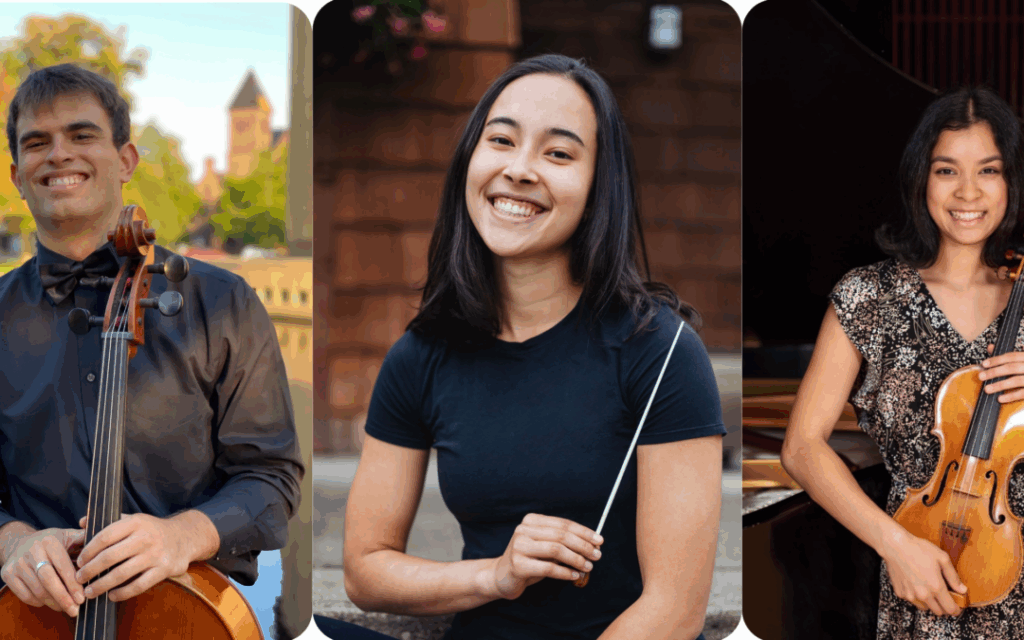I remember it like it was yesterday, a crisp autumn evening, the kind where the air hums with anticipation. I was sitting at an old, slightly out-of-tune piano in my childhood home, fingers dancing across the keys, lost in a piece by Chopin. Music wasn’t just a hobby for me; it was the language of my soul, the very air I breathed. My dream, vivid and insistent, was to pursue music professionally, to study at a prestigious institution, to perform on grand stages. But then, reality, a harsh dissonant chord, would always interject: the cost. Tuition fees, living expenses, instrument maintenance – it all felt like an insurmountable mountain. That’s when my teacher, a kind woman with an encyclopedic knowledge of all things musical, first whispered the words that would change my trajectory: "Have you looked into music performance scholarships?"
At first, I was skeptical. Scholarships felt like something reserved for child prodigies or those with perfect academic records, neither of which I considered myself to be. I was a dedicated musician, yes, but a regular kid from a regular family. My grades were good, not stellar, and while I loved to perform, the idea of competing for a scholarship against countless other talented young musicians was daunting. Yet, that seed of possibility had been planted. What if? What if there was a way to fund my musical education, to truly dedicate myself to my craft without the crushing weight of financial burden? This, my friends, is the story of how I navigated that path, a journey filled with practice, perseverance, and a surprising amount of paperwork, all in pursuit of those elusive music performance scholarships.
My first step, and perhaps the most crucial for anyone beginning this quest, was research. I devoured information online. University websites became my nightly reading. I learned that music performance scholarships aren’t just one-size-fits-all. They vary wildly. Some are based purely on musical talent demonstrated through an audition, others consider academic merit alongside performance ability, and a few even look at financial need. There are scholarships specifically for instrumentalists, vocalists, composers, jazz musicians, classical performers, and even those focused on particular instruments like piano scholarships or violin scholarships. This discovery was eye-opening. It meant I wasn’t just looking for a scholarship, but the right scholarships for me.
I started by listing the music schools I dreamed of attending. Then, I meticulously combed through each school’s financial aid and music department pages. This often involved digging deep, sometimes finding specific links to "scholarships for musicians" or "performing arts scholarships." I also discovered independent scholarship databases and organizations dedicated to supporting young artists. Groups like the National YoungArts Foundation, specific instrument societies, and local arts councils often have their own funding opportunities. It was like piecing together a complex musical score, each note a potential opening.
The heart of any music performance scholarship application, I quickly learned, is the audition. This isn’t just a casual play-through; it’s your moment to shine, to demonstrate years of practice, passion, and artistic maturity. For me, a classical pianist, this meant preparing a repertoire that showcased my technical prowess, musicality, and stylistic understanding. I spent months selecting pieces: a challenging Baroque fugue, a romantic sonata movement, and a dazzling contemporary etude. Each piece had to tell a story, to reveal a different facet of my playing.
Preparing for these auditions was an all-consuming process. My practice hours doubled, then tripled. Every note, every dynamic, every nuance was scrutinized. I recorded myself constantly, listening back with a critical ear, identifying weaknesses, refining interpretations. I performed for my teacher, for my family, for anyone who would listen, trying to replicate the pressure of a real audition. The goal wasn’t just to play the notes correctly, but to communicate the essence of the music, to connect with the panel on an emotional level. When the audition day finally arrived, whether it was in person or a recorded submission, my hands might have trembled, but my heart was resolute. I knew I had put in the work.
Beyond the audition, the application package for music college funding usually requires several other key components. Academic transcripts were crucial; even for performance-based scholarships, schools want to see that you can handle the academic rigor of a university curriculum. Maintaining a solid GPA was always in the back of my mind throughout high school. Then there was the personal statement or essay. This was my chance to tell my story, to articulate why music was so important to me, what my aspirations were, and how a scholarship would help me achieve them. I poured my soul into these essays, sharing anecdotes about my musical journey, the moments that ignited my passion, and my vision for contributing to the musical world. It wasn’t just about listing achievements; it was about conveying genuine passion and potential.
Letters of recommendation also played a significant role. I carefully chose individuals who knew my musical abilities and character intimately: my piano teacher, my high school band director, and a mentor who had seen me perform regularly. I made sure to provide them with my resume, a list of my accomplishments, and specific points I hoped they would highlight – my dedication, my ability to collaborate, my work ethic, and my growth as a musician. A strong letter from someone respected in the music community can truly elevate an application.
And of course, there was the resume or musical portfolio. This was where I listed every performance, every competition, every masterclass, every ensemble I had ever been a part of. It was a tangible record of my commitment and experience. While it felt a bit like bragging, I understood it was necessary to showcase my journey and demonstrate my active involvement in the musical world.
The application period was a whirlwind of deadlines, forms, and nervous waiting. There were moments of doubt, of feeling overwhelmed by the sheer number of talented applicants I knew were out there. I faced rejections, too. A few schools, despite my best efforts, simply didn’t see me as the right fit, or perhaps their limited scholarship funds went to someone else. Each rejection stung, a dull ache of disappointment. But my teacher, ever the optimist, reminded me that it was all part of the process, a redirection rather than a defeat. "Every ‘no’ brings you closer to a ‘yes’," she’d say, and I held onto that mantra.
Then, one sunny afternoon, while I was practicing, a thick envelope arrived from my top-choice school. My hands trembled as I opened it. Inside, nestled among the acceptance letters and program details, was an official offer for a significant music performance scholarship. It wasn’t just an acceptance; it was an affirmation. It was the universe, or perhaps just a very dedicated scholarship committee, telling me that my dream was indeed within reach. The relief and joy were immense, a crescendo of emotions after months of quiet anticipation. This tuition assistance for music school meant everything.
Life as a scholarship recipient was, in many ways, just as demanding as the application process. The scholarship wasn’t a free pass; it was an investment in my potential, and I felt a deep responsibility to honor that investment. This meant maintaining strong academic standing, dedicating myself to my practice, actively participating in ensembles, and taking advantage of every opportunity the school offered – masterclasses with visiting artists, student recitals, community outreach performances. The scholarship wasn’t just about financial aid; it was about belonging to a community of dedicated musicians, learning from world-class faculty, and having the resources to truly develop my artistry. The networking opportunities alone were invaluable. I met fellow students who shared my passion, professors who became mentors, and guest artists who inspired new directions in my playing.
Looking back, that music performance scholarship didn’t just pay for my education; it opened doors to a world I could only have dreamed of. It provided the freedom to focus on my craft, to experiment, to grow, and to find my unique voice as a musician. It instilled in me a deeper sense of discipline and a profound appreciation for the power of music to transform lives.
For anyone out there, a young musician with a beating heart full of melodies and a mind full of dreams, don’t let the fear of financial barriers silence your song. Music performance scholarships are real, they are attainable, and they are designed precisely for individuals like you, who have talent, dedication, and an unwavering passion for their art.
Start your research early. Identify your strengths and areas for growth. Practice diligently, not just the notes, but the artistry behind them. Craft compelling essays that tell your unique story. Seek out strong recommendations from those who truly know your musical journey. Prepare for your auditions as if they are the most important performance of your life, because in many ways, they are. And most importantly, persevere through the rejections and the doubts. Keep believing in your musical voice, because somewhere out there, a scholarship committee is waiting to hear it, ready to invest in your future. Your melody of opportunity is waiting to be played. Go find it.



